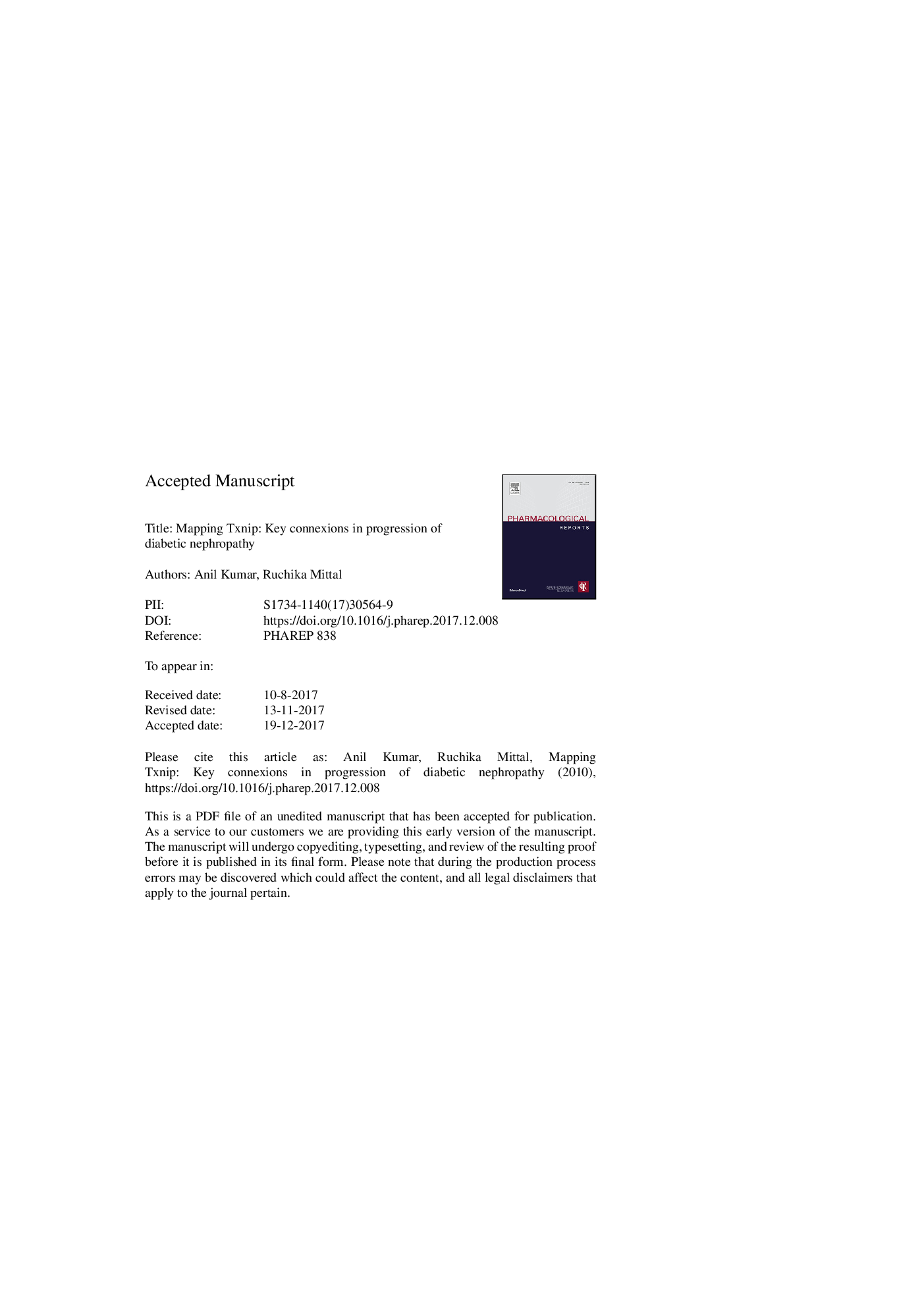| Article ID | Journal | Published Year | Pages | File Type |
|---|---|---|---|---|
| 8349671 | Pharmacological Reports | 2018 | 34 Pages |
Abstract
Studies demonstrates the major involvement of inflammatory and apoptotic pathway in the pathophysiology of diabetic nephropathy. The cross talk between inflammatory and apoptotic pathway suggests Txnip as a molecular connexion in progression of disease state. Txnip modulates inflammatory pathway (via ROS production and NLRP3 inflammasome activity) and apoptotic pathway (via mTOR pathway). The key contribution of Txnip in both the pathways, reflects, its crucial role in diabetic nephropathy. In the present review, we have first provided an overview of diabetic nephropathy and Txnip system, followed by the mechanistic insight of Txnip in the progression of diabetic nephropathy. This new mechanistic approach suggests to explore Txnip modulators as a promising therapeutic drug target in diabetic nephropathy.
Keywords
NCCSAGTXNIPc-Jun-N-terminal kinasePIP3NLRP3Nox-4P2X7IL-1βPRXPPARCysPIP2ASK-1VEGFR2mTORTCAMAPKKKECMNODJnkNACHT, LRR and PYD domains-containing protein 3TrpMAPKMn-SODNF-кBROSS-antigeninflammationinterleukin-1 βTryptophannucleotide-binding oligomerization domainCysteineTumor Necrosis Factor- αVascular endothelial growth factorVascular Endothelial Growth Factor (VEGF)TNF-αFoxOphosphatase and tensin homologExtracellular matrixmTOR pathwayPRODiabetic nephropathyMechanistic target of rapamycinperoxisome forkhead box proteinThioredoxin interacting proteinmitogen activated protein kinaseProlinetricarboxylic acid cyclePtenApoptosis signal-regulating kinase-1GlyGlycineReactive oxygen speciesVascular endothelial growth factor receptor-2peroxisome proliferator-activated receptor
Related Topics
Life Sciences
Biochemistry, Genetics and Molecular Biology
Biochemistry
Authors
Anil Kumar, Ruchika Mittal,
